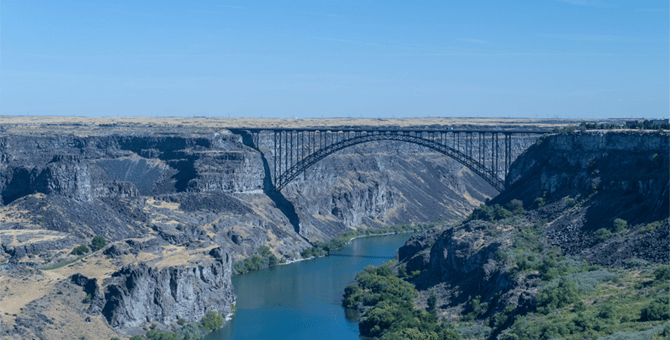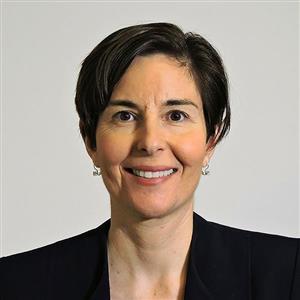In late September, the San Francisco Fed partnered with the Idaho Department of Commerce, Idaho Rural Partnership, the Idaho Hispanic Foundation, and USDA Rural Development Idaho to host the Idaho Rural Success Summit in Twin Falls, Idaho. This event—the brainchild of Leilani Barnett, SF Fed Community Development Senior Outreach Manager, and Rudy Soto, Executive Director of Idaho USDA Rural Development—sought to spotlight successful examples of rural community development and foster networking opportunities and information sharing. Leilani filled us in on highlights from the event and her hopes for continued cross-sector collaboration in the state.

Can you tell us about the Idaho Rural Success Summit?
The SF Fed co-hosted the Idaho Rural Success Summit in Twin Falls on September 27 in partnership with the USDA, the Idaho Hispanic Foundation, Idaho State Chamber of Commerce, and the Idaho Women’s Business Development Center.
The summit was inspired in part by a book published recently by the Federal Reserve Bank of St. Louis in collaboration with the Federal Reserve Board of Governors: Investing in Rural Prosperity (downloadable for no cost at the web link). The gathering brought together professionals from across sectors as well as community leaders to learn about successful strategies and approaches to help rural communities prosper. Some of the industries represented included agriculture, housing, economic development, and health.
Attendees came from nonprofit organizations; business chambers of commerce; tribal organizations; federal, state, and local government agencies; community development financial institutions (CDFIs); and more.
There were many rural success stories shared that covered a range of topics, including:
- Childcare and preschool education
- Health care
- Minority business development
- Micro lending to small businesses
- Infrastructure and broadband development
- Affordable housing
- Downtown revitalization
- Outdoor tourism as economic development
- Apprenticeship programs
- Youth access to healthy foods and exercise

Why is rural community development a focus?
We know from research and by listening to communities that the big changes we face as a society—such as the pandemic, inflation, and climate risk—impact rural communities differently than urban or suburban areas. Each rural community has specific challenges and opportunities that are unique to them. Learning about how businesses and low- and moderate-income people are doing in our rural communities is important to the Federal Reserve’s work in promoting a healthy and sustainable economy and supporting the nation’s financial and payment systems.
Why do you think this event is so important?
It can be easy for us all to work in silos. But to succeed at the highest level, and to be inclusive so that everyone in a community can participate in that success, we need to work collaboratively, work across sectors, and share resources and lessons learned. The pandemic allowed us to work together virtually, but there is still something unique about gathering in person that allows for more relationship building, creativity, and connection. These are all ingredients in building successful communities.

What are some of your key lessons learned from the Summit?
My favorite part was the lightning round talks. We had about a dozen people share their story of success from their rural community, and how they did it, in 10 minutes each.
One of the talks that really stuck with me was shared by Karen Fitzgerald with the Lincoln County Idaho Youth Commission. She shared a story about how she and other moms in her community realized they had no satisfactory options for quality after school childcare. Over the course of 18 months, these moms came together to raise about $1.3 million in grants and donations to buy a building, pay for staff and programming, and find ways to serve the children who live in Lincoln County. They then also opened a preschool and have plans to create a daycare as soon as possible.
What Karen shared is that none of the team members who created the after-school program and preschool had any experience doing so, but they pulled together, asked lots of questions of many different people and organizations, and tried to find successful models to replicate. They didn’t let their initial lack of knowledge hinder them, and they learned a lot through the process. At least part of their success was from the social capital they had in their rural community, which often is a strength of rural communities. To me, this was an inspiring story about how community development work can be accomplished successfully when folks are willing to take initiative, show leadership, and work together.
What were the overarching messages from those stories?
Some of the key takeaways from these stories are that rural communities have a lot of social capital, which I mentioned earlier. Many people know each other and rely on each other in various ways—there’s not the anonymity of big city living. Leveraging this social capital to expand opportunities in rural areas can be very effective, but it does take intentionality.
Also, leadership is essential. In all the stories there was a brave leader. Many stories were of folks who didn’t have all the resources or knowledge, but bravely took action. Not all of us have the fortitude to take on as much risk as some of these leaders have, but we can support these community leaders. Success requires many different skills and strengths—it takes a village.
And lastly, collaboration—none of us are alone. It’s easy to feel like a lone wolf, but as one speaker said, it’s likely what you’re trying to achieve has been done before. It’s helpful to learn from others who have done similar work and to learn about the resources available to support your efforts, and that takes collaboration.


Looking to the future, what are your hopes for continued collaboration to support rural communities in Idaho and elsewhere?
There was a lot of energy, inspiration, and momentum that came out of this summit. I would like to help create or support an existing rural cross-sector collaborative in Idaho. Such a collaborative would be a way to continue to learn from each other and support each other in our efforts to help rural Idaho prosper in a way that is inclusive of everyone. I’d also like to see the Rural Success Summit become an annual event held in different parts of Idaho, so rural communities can continue to share their successes and connect with each other.
You may also be interested in:
The views expressed here do not necessarily reflect the views of the management of the Federal Reserve Bank of San Francisco or of the Board of Governors of the Federal Reserve System.

